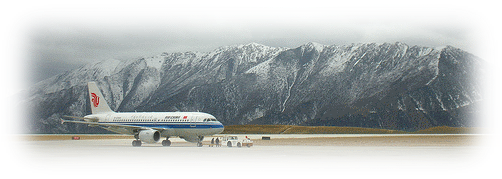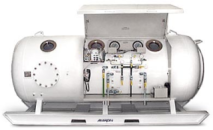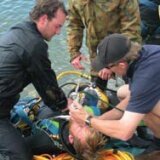High Altitude Sickness

High altitude sickness or altitude illness are the terms used to describe several conditions which usually occur to individuals ascending or adjusting to high altitudes. Altitude sickness is caused by ascending too rapidly, which doesn't allow the body enough time for adaptation to a reduced oxygen concentration as well as changes in atmospheric pressure.
In severe cases of high altitude illness, fluid builds up within the brain, the lungs, or both. Acute Mountain Sickness (AMS), High-Altitude Cerebral Oedema (HACE), and High-Altitude Pulmonary Oedema (HAPE) are the conditions associated with High Altitude Sickness. Altitude illness syndromes may be harmful or even fatal if its signs and symptoms are ignored. The video below speaks about awareness and recognition of the early symptoms of the altitude sickness...
Many otherwise healthy individuals experience high altitude sickness within a day or two after ascent to altitudes above 8,000 feet, particularly if they arrived by air from sea level. Symptoms include headache, lethargy, insomnia, anorexia, and in some cases nausea and vomiting. Believed to be due to mild cerebral edema, acute mountain sickness typically resolves over several days even if the individual remains at altitude.260
High altitude cerebral edema and high altitude pulmonary edema are more serious, sometimes fatal maladaptations of previously healthy individuals who ascend rapidly above lO,OOO-12,000 feet, which typically occur several days after arrival. Chronic altitude sickness occurs in some individuals after months or years of residence at high altitude.260

There is evidence that evolution may be at work among peoples who have resided at altitude for thousands of generations to make them better adapted and less likely to suffer altitude-related illness. Altitude sickness is much more common among residents of the Colorado Rockies, where people of European ancestry have lived for less than 150 years, and also more common among the high altitude residents of the Andes, who have been there for up to several thousand years, than on the Tibetan Plateau, where the Tibetan peoples may have resided for a much longer period.
Compared with the two former groups, Tibetans have higher resting ventilation, stronger hypoxic ventilatory responses, lower hemoglobin concentrations, and increased cerebral blood flow with exercise. Their resting pulmonary artery pressures are normal by sea level standards, and they exhibit only minimal HPV both at rest and during exercise. In addition, Tibetans have less intrauterine growth retardation than high altitude residents of the Rocky Mountains and the Andes.
A natural experiment has been carried out in Tibet since that country was assimilated politically into China 50 years ago. A number of physiologic studies have been carried out in Lhasa (altitude 3,658 m) comparing the native Tibetans with Han (Chinese) residents, the latter having lived at altitude for only a few years.
These studies show that, compared with healthy Han residents of Lhasa, native Tibetans have increased resting ventilation, increased hypoxic ventilatory response, larger vital capacity, and lower resting PaCo2 and Pc(A-a)O2. Tibetans also have less electrocardiographic evidence of right ventricular hypertrophy than do their Han counterparts. From the results of these studies it can be concluded that the Tibetans are better adapted to life at altitude than are the Han, perhaps indicating evolutionary adaptation to chronic hypoxia over many generations.260
Chronic altitude sickness is a disorder affecting many long-term residents of altitudes above 9,000 feet. It is similar in some ways to what is seen in COPD patients with chronic hypoxemia, although it does not involve airflow obstruction and has several features not generally observed in COPD.260
As mentioned above, it occurs commonly in the Rockies and the Andes, but is uncommon among natives of the Himalayas and the Tibetan Plateau. Symptoms of chronic mountain sickness include lethargy, mental slowness, and decreased exercise capacity. Affected individuals are plethoric and usually have conjunctival injection and peripheral edema.
Laboratory evaluation shows more severe hypoxemia and higher P,co2 han observed in others at the same altitude, along with erythrocytosis that may be profound, with hematocrit values of 75% or more. The disorder is believed to result from maladaptation to high altitude, with relative hypoventilation, pulmonary hypertension, and car pulmonale.
It becomes more common with increasing age, and is more commonly seen in men than in women before menopause. Treatment aims to relieve hypoxemia and blood hyperviscosity. Ideally, affected individuals should move permanently to a lower altitude, but this may not be an option for socioeconomic reasons. Similarly, LTOT is seldom available in the remote regions where chronic altitude sickness is prevalent. Staged phlebotomy is performed to maintain the hematocrit closer to the level expected for the altitude at which the patient lives.260
Read more about Tissue Hypoxia, Hypoxic Hypoxia, Histotoxic Hypoxia, Cerebral Hypoxia.
Return to the Hypoxia overview












